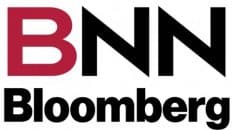Nothing lets the air out of a politician’s balloon faster than the sight of inflation rocketing skyward.
Of course, a key ingredient in this economic mess we find ourselves in is the cost of energy of all forms. Energy is the easiest target because it’s the most visible, and the energy sector includes petroleum, which just happens to be an invaluable source of tax revenue for the politicians. Those politicians are now attacking this same cash cow to address the inflation question, hoping for an answer before the U.S. mid-term elections.
I admit to both amusement – cross contaminated with bemusement when the leader of the world’s largest energy producer, as well as a top tier exporter of crude oil and all refined products, demands that the U.S. oil industry explain – or rein in profits while at the same time increase supply of crude, gasoline, and diesel.
Heck guys! It’s all just a matter of flipping a switch.
Let’s flip the page to the latest U.S. inventory report to see where the problem is and how easy it will be to fix this inflation thing.
From a supply perspective it is not a pretty sight and not soon to change in the consumer’s favour, and here’s why:
1.
Crude oil levels are stuck in free fall now – 14% below the 5-year average. You may say, so, just increase crude production in the U.S. or Canada and tell OPEC to get its act together and pump more of that evil, very un-green and polluting crude oil in Alberta so that our pump prices get lower. I mean, we have priorities ya know?
My first comment is to stop drawing crude from the Strategic Petroleum Reserve at a rate 1 million barrels per day and exporting this nest egg crude as well as diesel to Europe because this lowers inventories at home and increases prices at the same address.
2.
How about sending a wakeup call to the shale oil folks because they’ve shown they can increase production by flipping that magical switch.
Not so nowadays as shareholders and the investment community are shying away from the fossil fuel industry due to political and environmental pressure.
3.
OK, so let’s talk to OPEC and get them to increase production.
Well, bit of a problem there. Of the 23 members only three have any spare capacity: the Saudis, U.A.E., and Kuwait. Even the spare capacity claims are suspect, and the Saudis are reluctant to cooperate as the revenue stream at current prices is an attractive one.
4.
OK, so just increase refinery runs to get more gasoline to market.
Nope, there isn’t much room left on the refinery speedometer with the east running at 98%, the mid-west at 93%, and the key Gulf Coast hub at 96%. You see, we can’t de-mothball facilities that were closed because of evaporation of demand that began with the pandemic in 2020. In addition, some refineries were converted to produce biofuels, which became the flavour of the month for nervous investors and politicians waving their environmental dance cards.
5.
What about price controls to show the oil industry who’s boss?
Setting or limiting prices will only increase pump and rack prices because the U.S. imports 7 million barrels per day (bpd) of crude, 650,000 bpd of gasoline, and 160,000 bpd of diesel. If an exporter to the U.S. sees price limitation on their product they will simply go to a more lucrative and less confining market.
6.
How about lowering taxes?
Lowering taxes is always a headline grabber but it’s only a cosmetic, short-term bandage that will have little long-term effect on stemming the hemorrhaging. Any healing effect of short-term lowering of taxes will, as we all know, come back to haunt us in the long-term.
I once saw a political motto scribbled on the back of a napkin that read, “Don’t pay us now! You will pay us later.”
– Roger McKnight – B.Sc., Senior Petroleum Analyst








Add comment